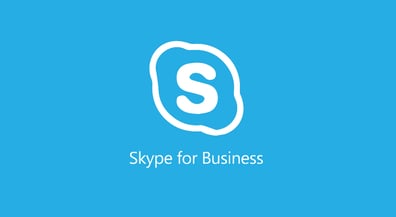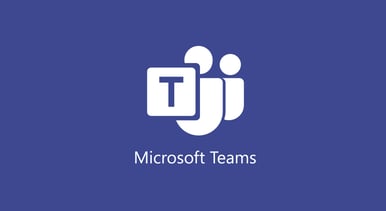Skype for Business is in its twilight years, which means that Microsoft Skype for Business Online users will need to make the move to Microsoft’s Teams by July 31, 2021. As the case tends to be with change, there are a few things that may be uncertain or confusing. Those of you who are planning to make the switch soon, or are already in the process of doing so, will have questions that need to be answered. There’s a good chance we know some of the questions on your mind, and we have the answers you need. We’ve recently made this transition in our own organization, and we have first-hand insights to share.
1) Why is Microsoft abandoning Skype for Business and switching to Teams?
 To put it in simple terms, Skype for Business simply isn’t up to snuff with the modern workplace. Much has changed over the years, and today’s teams need more. The modern workplace is now comprised of every tongue, tribe, and nation, spread all around the globe, spanning five different generations, and accommodating for users with various physical and mental drawbacks. Teams is intelligent software for communications, with voice and video technology, along with highly-integrated accessories to meet the diverse needs of the modern workforce. Skype for Business has become limited in its reach and functionality to empower today’s teams.
To put it in simple terms, Skype for Business simply isn’t up to snuff with the modern workplace. Much has changed over the years, and today’s teams need more. The modern workplace is now comprised of every tongue, tribe, and nation, spread all around the globe, spanning five different generations, and accommodating for users with various physical and mental drawbacks. Teams is intelligent software for communications, with voice and video technology, along with highly-integrated accessories to meet the diverse needs of the modern workforce. Skype for Business has become limited in its reach and functionality to empower today’s teams.
All in all, Teams is a vastly different product from Skype for Business and a superior collaboration product that will only get better as time goes on. With that in mind, keeping Skype for Business would do nothing but syphon development resources that might otherwise improve Teams even more.
|
Questions about Skype for Business Online coming to End of Life?

|
2) What is the difference between Skype for Business and Teams?
 As mentioned in the first question, Teams is a product more suited to the modern workplace, and Microsoft’s engineers have successfully met their goal of feature parity with Skype for Business. Now, for every area that Skype for Business excelled, Teams has a solution. It allows users to communicate and collaborate through a single interface, streamlining the process and making it easier for everyone. Teams users enjoy a deep integration with Office 365 applications that Skype for Business users doesn't, such as SharePoint, Groups, and OneDrive. Imagine editing a document with your team in real time, straight from your chat thread. All things considered; Teams is essentially the evolved form of Skype for Business.
As mentioned in the first question, Teams is a product more suited to the modern workplace, and Microsoft’s engineers have successfully met their goal of feature parity with Skype for Business. Now, for every area that Skype for Business excelled, Teams has a solution. It allows users to communicate and collaborate through a single interface, streamlining the process and making it easier for everyone. Teams users enjoy a deep integration with Office 365 applications that Skype for Business users doesn't, such as SharePoint, Groups, and OneDrive. Imagine editing a document with your team in real time, straight from your chat thread. All things considered; Teams is essentially the evolved form of Skype for Business.
3) What if I’m using Skype for Business Server as my voice solution?
The good news for you is that Microsoft will be supporting Skype for Business Server at least until 2025. You won’t be forced to adjust your on-prem voice endpoints until then. However, now is the time to get a migration plan in place for transitioning your voice environment to the Cloud. While this may sound like a heavy lift, Teams makes this available with licensing options for voice, and working with a Microsoft partner to design your solution will ensure that all your bases are covered.
4) Why should my organization transition to Teams?
This article might start sounding like a broken record before too long, but I can’t stress enough that Teams is, without a doubt, the superior product.
 Your organization will quickly experience the benefits of higher productivity and streamlined collaboration as you take advantage of the features and capabilities of Teams.
Your organization will quickly experience the benefits of higher productivity and streamlined collaboration as you take advantage of the features and capabilities of Teams.
Teams hasn’t been around for that long, having been released worldwide in March of 2017, but it’s already capable of more than Skype for Business ever was. Not only that, but its rich intelligent communications roadmap promises rapid innovation. While Skype for Business lingers on its plateau, Teams will continue to ascend to new heights. In fact, Microsoft already has new features scheduled to come to the platform before the end of 2019. These include live captions, secure private channels, custom backgrounds, and more.
It’s features such as these that help make Teams such a stellar, feature-rich, modern user experience. Its cross-platform technology is state of the art, boasting an easy-to-use mobile app that seamlessly integrates with the network. A user can start a call on a computer and continue it later via cell phone with no interruptions. In fact, the Teams app isn’t even required to join a call or meeting. A guest need only be given a link, and he or she can join the call from any device with access to the internet.
The fact that “Teams” uses the plural form of the word is apt. Today, workers generally don’t belong to just one team. It’s not at all uncommon for them to be on two, three, or perhaps as many as six or seven. Teams has easy to use channels for each individual team, allowing users to easily keep text messages, meeting calendars, and video conferences separate and organized for each team.
Most importantly, Teams has better operational performance. Skype for Business is notorious for inconsistent call quality, and other general performance issues. Teams not only runs better than Skype for Business, but also has numerous features to minimize audio and video problems, such as automatic muting.
5) What Skype for Business capabilities will be available in Teams?
The short answer is “all of them”, along with many other new capabilities. Calls, meetings, messages, custom backgrounds, third-party integration
, and many more features prominent in Skype for Business are present in Teams. In fact, since Microsoft announced they’re retiring Skype for Business Online on July 31, 2021, some of these features will soon only be available on Teams.

Microsoft can confidently say that Teams has reached feature parity with Skype for Business, so you won’t be left without any major business functions or processes once you make the switch. All in all, Teams’ capabilities relative to Skype for Business’ are massive in scope, ensuring that the effort involved in migration will seriously pay off.
6) What does this mean for Office 365 users?
Skype for Business will soon be off the table for Office 365 users, meaning the sooner you make this transition, the better. Certain customers will be automatically onboarded to Teams, but this only accounts for those with less than 500 seats. For larger companies, the process is more involved, so an automatic “switch on” wouldn’t be appropriate. Making the switch well requires a strategic roadmap and user adoption plan to ensure that this is a win for your company.
When it comes right down to it, Office 365 users don’t have much of a choice when it comes to Skype for Business versus Teams. That may seem frustrating but considering just how much better Teams is than its predecessor, you’ll surely find the sacrifice worthwhile.
7) How do I prepare my organization to transfer to Teams?
It’s as simple as flipping a switch, right? Wrong!
Taking Skype for Business behind the barn and bringing Teams in to take its place is a process that comes with its own set of difficulties. As great as Teams may be, it isn’t supernatural, and it won’t magically make all your users proficient in it or enthusiastic about it. The transition to Teams marries technical and user readiness, as both need to be optimal for operational excellence.
The process can be long and sometimes even difficult, but Microsoft and Continuant will be able to offer support at every step. Coincidentally, that brings us to our next question...
8) What support is there for organizations moving to Teams, especially those who have made significant investments in Skype for Business online?
There are two major sources for this kind of support: Microsoft and Continuant. As you can imagine, Microsoft can offer a lot of helpful information to users regardless of where they are in the transition. It is, in fact, the company that made and developed Teams and has operated Skype for Business for many years. Chances are if there’s a dilemma with any of these applications, the people at Microsoft will have a solution.
 Unfortunately, Microsoft won’t be able to do everything for you. When deploying and implementing Teams, there are certain steps for which you’ll want an integrator’s help. That’s where Continuant comes in. Continuant’s experts are well versed in both Skype for Business and Microsoft Teams, and can help make sure that the time and money you’ve spent on this change doesn’t go to waste.
Unfortunately, Microsoft won’t be able to do everything for you. When deploying and implementing Teams, there are certain steps for which you’ll want an integrator’s help. That’s where Continuant comes in. Continuant’s experts are well versed in both Skype for Business and Microsoft Teams, and can help make sure that the time and money you’ve spent on this change doesn’t go to waste.
It’s also likely that your collaboration environment has some third-party applications that need to be integrated. While Microsoft will give their attention primarily to solutions with their “stamp of approval”, we’ll happily work with whatever applications you bring to the table, and make sure a solution is found. It’s common for us to enable solutions that look more like “Teams + Zoom” or “Teams + Five9”, to ensure you get to the right end goal for your organization.
9) Is there a firm deadline by which customers need to move from SfB to Teams?
Yes! July 31, 2021. That might seem like a good while away, but don’t let this date delay you from making plans now. A lack of proactive planning could leave you stuck in limbo between the two systems, and the last thing you want is to be rushed. Starting your journey to Teams sooner rather than later will only benefit you in the long run.
10) Where do I start transitioning from Skype for Business to Teams?
This is the final question, and probably the most important. Your start with Teams is more than just a click away, and though the process can take time, it’s well worth it.
You’ll want to begin by getting a very clear vision regarding teamwork and collaboration in your business. How do you currently manage your teams? What are your needs in terms of collaboration? What would you like your teams to look like in the future? Think big as you answer these, and once you do, you’ll be ready to begin.
As the process continues, always bear in mind that it has two sides: the technical side and the user side. Deployment applies to the technical side. It tends to be straightforward, mostly just involving installation and integration. Adoption, as you might have guessed, applies to users. This aspect of the transition might sound simple, but in many cases, it can prove to be difficult. To make sure this goes as smoothly as possible, be sure to plan accordingly. Identify individuals who are both technically and socially qualified to show others how Teams works, and make sure they do what they can to get others using it as well.
Finally, it’s time to plan the upgrade. Fortunately, this part shouldn’t be too difficult. Upgrades from Skype for Business to Teams adhere to a clear roadmap, allowing users to gradually shift away from Skype for Business and grow steadily more accustomed to Teams. Planning is key to make this whole process work, and that’s exactly what Continuant is here to help with.
Hopefully we’ve answered several of your burning questions. If there’s anything more you’d like to know, feel free to contact us. In the meantime, check out 8 more questions you’ll likely have while making your journey from Skype for Business to Teams.

%20Success%20Stories/3M%20-%20main.jpg)
%20Success%20Stories/Baylor-CS-Image-2.jpg)



 To put it in simple terms, Skype for Business simply isn’t up to snuff with the modern workplace. Much has changed over the years, and today’s teams need more. The modern workplace is now comprised of every tongue, tribe, and nation, spread all around the globe, spanning five different generations, and accommodating for users with various physical and mental drawbacks. Teams is intelligent software for communications, with voice and video technology, along with highly-integrated accessories to meet the diverse needs of the modern workforce. Skype for Business has become limited in its reach and functionality to empower today’s teams.
To put it in simple terms, Skype for Business simply isn’t up to snuff with the modern workplace. Much has changed over the years, and today’s teams need more. The modern workplace is now comprised of every tongue, tribe, and nation, spread all around the globe, spanning five different generations, and accommodating for users with various physical and mental drawbacks. Teams is intelligent software for communications, with voice and video technology, along with highly-integrated accessories to meet the diverse needs of the modern workforce. Skype for Business has become limited in its reach and functionality to empower today’s teams. 
 As mentioned in the first question, Teams is a product more suited to the modern workplace, and Microsoft’s engineers have successfully met their goal of feature parity with Skype for Business. Now, for every area that Skype for Business excelled, Teams has a solution. It allows users to communicate and collaborate through a single interface, streamlining the process and making it easier for everyone. Teams users enjoy a deep integration with Office 365 applications that Skype for Business users doesn't, such as
As mentioned in the first question, Teams is a product more suited to the modern workplace, and Microsoft’s engineers have successfully met their goal of feature parity with Skype for Business. Now, for every area that Skype for Business excelled, Teams has a solution. It allows users to communicate and collaborate through a single interface, streamlining the process and making it easier for everyone. Teams users enjoy a deep integration with Office 365 applications that Skype for Business users doesn't, such as  Your organization will quickly experience the benefits of higher productivity and streamlined collaboration as you take advantage of the features and capabilities of Teams.
Your organization will quickly experience the benefits of higher productivity and streamlined collaboration as you take advantage of the features and capabilities of Teams.
 Unfortunately, Microsoft won’t be able to do everything for you. When deploying and implementing Teams, there are certain steps for which
Unfortunately, Microsoft won’t be able to do everything for you. When deploying and implementing Teams, there are certain steps for which 